Learn How to Make Sour Cream with 2 ingredients from your grocery store. Homemade Sour Cream is easy to make and is great for making dips, topping a baked potato, and adding to baking recipes to create tender, lighter, fluffier cakes and baked goods.

Affiliates note: As an Amazon Associate I earn from qualifying purchases. My content may contain affiliate links to products and services. If you click through and make a purchase, I’ll receive a small commission. It does not affect the price you pay.
Table of Contents
- 2-Ingredient Homemade Sour Cream
- Can I Use Ultra-Pasteurized Cream?
- But Everyone Else Makes This in a Different Way!
- Simple Steps to Making Homemade Sour Cream
- Is this Sour Cream or Creme Fraiche?
- But What If I Have Raw Cream?
- More Homemade Dairy Videos
- How to Make Sour Cream Recipe
- Shop for items used in this blog post or video
2-Ingredient Homemade Sour Cream
Making Homemade Sour Cream is one of the easiest things you can do. All you need is:
- Some pasteurized regular whipping cream (not “heavy” whipping cream)
- A cultured milk product
For your cultured milk product, you can choose from:
- Buttermilk
- Plain whole milk kefir (store-bought or homemade), or
- Whole milk yogurt (also store-bought or homemade)
If you use buttermilk to make your sour cream, you can use the cultured whole milk buttermilk that you can buy at the store. However, if you make homemade cultured butter, you will have your own homemade real buttermilk that you can also use.
Can I Use Ultra-Pasteurized Cream?
If you’ve been with me awhile, you know that I generally don’t recommend drinking ultra-pasteurized milk or cream. However, if that is all you can find in your area, don’t worry. Whether you are making this sour cream or another homemade dairy-like yogurt, we are improving its nutritional value because we are culturing it.
What exactly do I mean by culturing? We are trying to recreate what would happen naturally in raw cream by inoculating pasteurized or ultra-pasteurized cream with a culture of good bacteria. And why is good bacteria important? Because it nourishes our intestinal lining—our “gut.” And scientists tell us the healthier our gut, the healthier we are.
Now, is our cultured pasteurized or ultra-pasteurized cream as nutritious as raw milk? No. It’s not as perfect as raw milk, but it’s a start. And that is all that matters. Start on your traditional foods journey wherever you are. As a wise person once said, “Grow where you are planted.” Just do the best you can with what you have. You are moving in the right direction!
But Everyone Else Makes This in a Different Way!
Now, yes, you may have seen a lot of recipes that make American sour cream differently than what I am showing you here. These other recipes will mix milk, cream, and some sort of acid, such as vinegar or lemon juice. This mixture will curdle into curds and whey. Once this happens, the curds and whey are remixed together, and you have American sour cream.
I do not make sour cream like this for two reasons. One, after you refrigerate it, it may separate, and then each time you go to use it, you need to remix it. But there is a much more important reason that I do not make homemade sour cream this way. The second reason is that adding an acid to milk and cream does nothing to improve the nutritional value of the end product.
As we discussed above, culturing is essential if you are using pasteurized or ultra-pasteurized cream. Restoring some of the nutrients destroyed during the pasteurization process is of paramount importance to me. This is, after all, a website about making traditional “nutrient dense” foods. So my goal is to make the foods that we create in our traditional foods kitchen to be as nutritious—nutrient dense—as possible.
Simple Steps to Making Homemade Sour Cream
Once you have your ingredients ready, pour your whipping cream into a clean jar with a bit of your culturing agent. Give it a good stir, and put a top on the jar. Afterward, put the jar in a room temperature (warm, but not hot) place in your kitchen where it will be undisturbed and allowed to thicken.
If you are using yogurt as your culturing agent, you will want to put your jar in a slightly warmer place such as an oven that is turned off, but with the electric light or the pilot light turned on. I explain all of this in detail in the recipe below.
It will take anywhere from 12-24 hours for your cream to “sour” and thicken. And that’s it! You now have sour cream.
Is this Sour Cream or Creme Fraiche?
Great question! When we make this sour cream, we are using regular whipping cream, not heavy whipping cream. Regular whipping cream has less fat than heavy whipping cream. And therein lies the difference. “American” sour cream has less fat than “European” sour cream or what in France is knows as Creme Fraiche. So if you are looking for something similar to what you would buy at a grocery store in the United States, this is the option you want.
But don’t worry. If Creme Fraiche is what you want, simply replace the regular whipping with heavy whipping cream, and you’re all set. After 12-24 hours, you’ll have Creme Fraiche!
But What If I Have Raw Cream?
If you have access to raw cream, you are blessed. And it is even easier to make sour cream. You can just put your raw cream in a jar, cover it, and allow it to sit in a warm place in your kitchen for 12-24 hours. It will sour naturally, and you will have sour cream. But will this be American Sour Cream or the higher fat Creme Fraiche? Great question!
What type of “soured” cream you have depends on where your cream originated. Was it the cream from a Jersey cow that produces a rich high fat cream? Then most likely, you will have Creme Fraiche. Or was the cream from a Holstein cow that produces a slightly lower fat cream? If so, chances are that your final sour cream will be more similar to American Sour Cream.
More Homemade Dairy Videos
Now that you’ve made sour cream, try your hand at other Homemade Dairy recipes, including cottage cheese, ricotta cheese, evaporated milk, condensed milk, and an easy yogurt made without a yogurt maker.
Stay in Touch with Mary’s Nest
- Subscribe to My YouTube Channel for Traditional Foods Videos (Free) - When you subscribe, be sure to click on the notification bell that will let you know each time I upload a new video.
- Subscribe to Mary’s Traditional Foods Newsletter (Free) - Get a free 36-page eBook for signing up: How to Stock Your Essential Traditional Foods Four-Corners Pantry.
- Join the Traditional Foods Kitchen Academy - For more detailed videos and exclusive members-only perks, join my YouTube membership community.
- Order The Modern Pioneer Cookbook - Get a hardcover book of Mary's nourishing recipes from a Traditional Foods Kitchen. This bestselling cookbook is published by Penguin Random House with their DK imprint.
- Preorder The Modern Pioneer Pantry - Be one of the first to get Mary's hardcover book about preserving food and making delicious meals from your Four Corners Pantry. Mary's second cookbook is also published by Penguin Random House.
I look forward to having you join me in my Texas Hill Country Kitchen!
I’d like to receive more tips and recipes from Mary’s Nest.
How to Make Sour Cream

Ingredients
- 8 ounces Whipping Cream NOT "heavy" whipping cream. You want whipping cream that has only 4.5 grams of fat.
- 2 tablespoons Cultured buttermilk See "Recipe Notes" below.
Instructions
- Pour whipping cream into a clean jar.
- Add buttermilk to cream.
- Stir the cream and the buttermilk with a clean utensil.
- Put a lid on the jar and leave the lid loose. Do not tighten the lid. If the jar you are using does not have a lid, another option is to cover the lid of the jar with a clean dish towel or new cheesecloth.
- Place the jar in a warm spot in your kitchen between 68-78°F, out of direct sunlight, and allow the cream to culture for 12-24 hours until the desired tangy taste and thickness is achieved.
- If you are using milk kefir to culture your cream, follow the same instructions above.
- If you are using yogurt to culture your cream, you will need to place your jar in a warmer place that can maintain a temperature of approximately 110°F. This place may be in an oven that is turned off but has the electric light or pilot light turned on.
- Refrigerate the sour cream in a jar with a tight-fitting lid. It should stay fresh for approximately 2 weeks.
Video
Notes
Shop for items used in this blog post or video
Favorite Sour Cream Making Supplies
- Pint-Sized Wide-Mouth Canning Jars
- Wide-Mouth Storage Lids
- Flour Sack Towels
- Cheesecloth
- Glass Bowls
Recommended Reading
Amazon Shop and Shopping Guide
- Visit Mary’s Nest Amazon Shop
- Visit my Shopping Guide page
Get up to 15% off for stocking your Traditional Foods Pantry and equipping your Modern Pioneer Kitchen, including discounts from US Wellness Meats, Farmhouse Teas, Lehman's, Masontops, Cultures for Health, Survival Garden Seeds, Redmond Real Salt, Plan to Eat, and More!
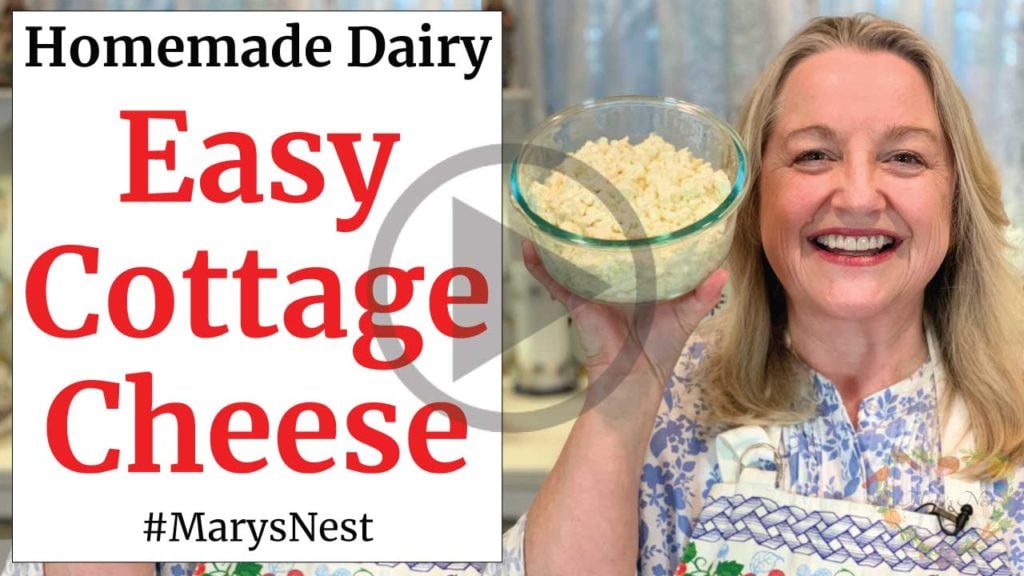
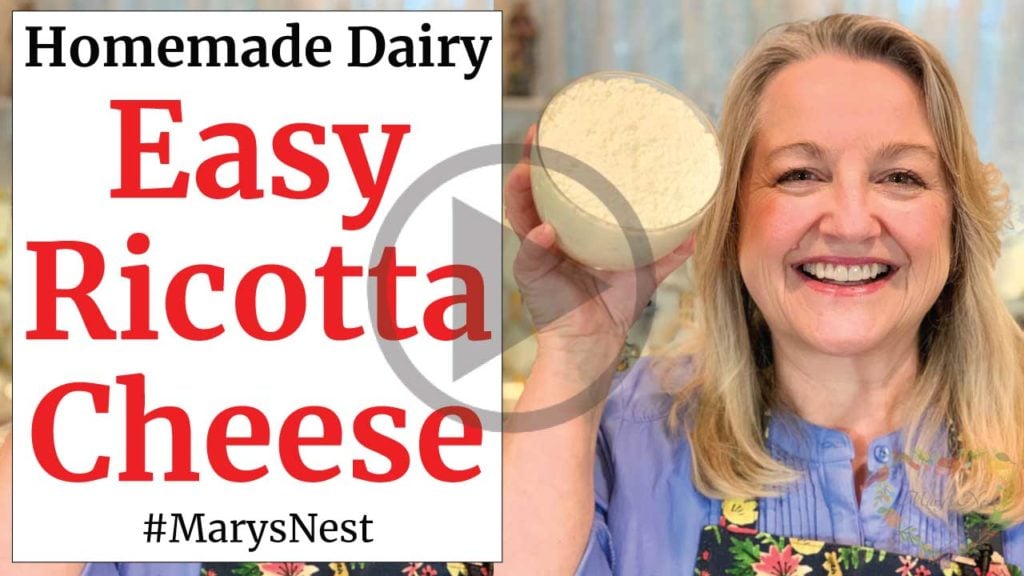

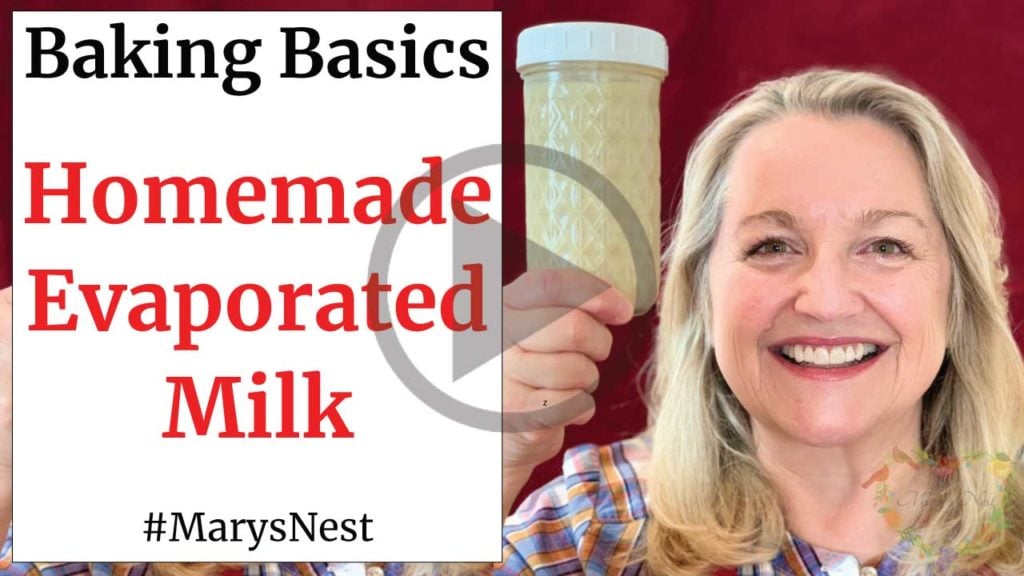
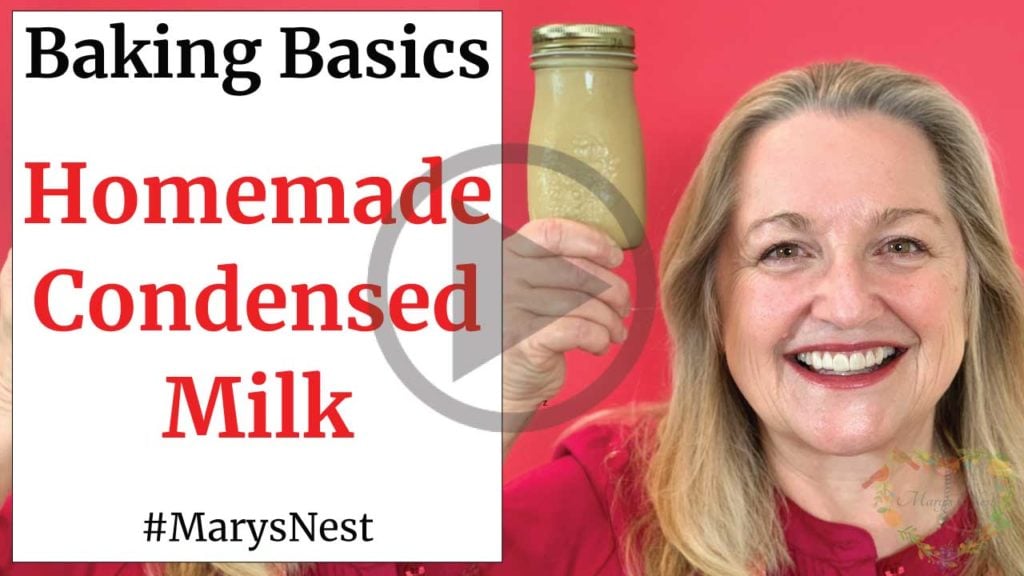
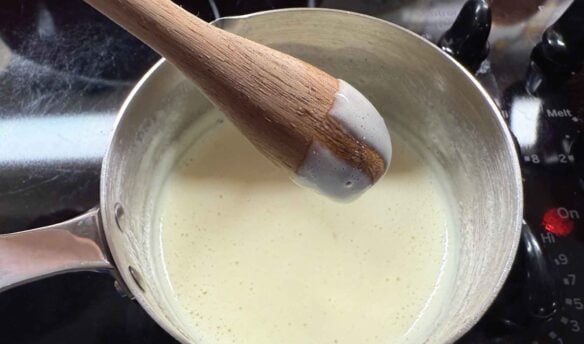


For some reason only heavy cream is available here for months. I used it for this sour cream recipe, and it was SO DELICIOUS! Will always try to make my own instead of store bought from now on, especially because I can buy organic cream to make it!
Hi Linda,
That sounds like a wonderful plan!
Thanks for your kind comment. I’m so glad that we’re on this traditional foods journey together.
Love and God bless,
Mary